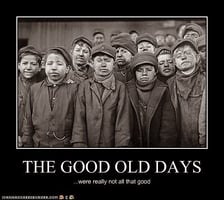When Ross and Rachel “took a break,” the reality that the relationship might not last started to...
Employee Feedback Should be a Habit, Not an Event

Earlier this week, I had a horrible night. I could neither fall nor stay asleep. I woke up way too early, feeling unrefreshed, mad at the dog (who had been sprawled across my legs seemingly all night!), and in dire need of coffee.
Now I am, quite frankly, never a ray of sunshine first thing in the morning. But THAT morning? Oh, let me tell you… my glum mood hung around far too long and well into the afternoon my picture could have appeared in the dictionary next to the word “cranky.”
Now what if, perchance, my employer happened to roll out/open up an annual “engagement survey” on that particular day? And what if, because I was feeling particularly peevish, I decided to sit down and fill out the survey … on that day?
How might I have answered these fairly common questions we see on surveys of this type? On a scale of 1 (“never”) to 10 (“always”)?
Question: Do you feel you have a good balance between your work and personal life?
Answer: No; I have had no sleep. Score: 1
Question: Do you feel motivated to do your best work every day?
Answer: Are you kidding me with this? I slept for 2 hours and can barely remember my name let alone put a coherent thought together. Score: 1
Question: How satisfied are you with your current role?
Answer: I want to fling myself off the nearest cliff and snuggle down in the field of wildflowers at the bottom and sleep for 3 days. Score: 1
If this sounds a little extreme, well… it is. But also, it’s not.
People Be Peopling
What we sometimes forget when we launch our carefully structured engagement surveys is that people are not answering from a perfectly neutral space. They’re answering from where they are in that specific moment - physically, emotionally, and mentally. The responses we get are valid…but they’re also highly context dependent. And if we’re only asking once a year, we’re basing our entire strategy on data from what may be someone’s worst (or best) day ever.
Let’s break down how this often works - and we all know this…don’t we?
We roll out a shiny, well-branded employee engagement survey once a year. The questions are solid. We tell people it’s confidential. We post QR codes in the breakroom and give managers talking points. Then we sit back and wait for the data to roll in.
And then it does. And it tells us that things feel… okay. Not amazing. Not catastrophic. Just okay.
People say they’re mostly satisfied. They feel somewhat heard. They believe their manager is reasonably supportive. Maybe scores are up two points over last year, maybe they’re down a few. Either way, we make a plan, present it to the leadership team, and commit to revisiting the topic in… well, a year.
But people don’t live their work lives on a 365-day cycle.
An annual survey captures a snapshot - a single frame in a much longer film. And depending on what’s happening on the day someone responds, you may get a very distorted picture of reality. Maybe the AC is broken that day. Maybe a beloved coworker just left. Maybe someone just got promoted. These experiences color how people respond.
When you only ask once a year, you’re assuming people’s perceptions and experiences are fixed. But humans are anything but fixed.
We are situational. We are seasonal. We are affected by both the moment we’re in and the cumulative weight of many moments before it.
Want to truly understand how your people are doing? Ask more often. Even better - make it a habit.
Why Frequent Feedback Matters
Organizations that truly want to understand the employee experience need to stop treating feedback like a once-a-year audit. Instead, it should be viewed as an ongoing diagnostic - a regular check-in on what’s happening beneath the surface. The more frequently you ask, the more accurately you can see trends, shifts, and emerging issues before they become full-blown culture problems.
And no, this doesn’t mean you need to pester people with 50-question surveys every Monday. But a few well-placed pulse checks - monthly, quarterly, even event-triggered - can offer insight into the real-time employee mindset. Did we just launch a new return-to-office policy? Check in two weeks later. Big leadership shift? Ask how people are feeling. Don’t wait 11 more months to find out you missed the mark.
Designing Feedback for Real Humans
Here’s the thing about humans: we’re messy. We’re emotional. We’re reactive. And most of us don’t walk around in a state of perfectly measured objectivity. Which is exactly why annual surveys, while helpful for high-level benchmarking, often fail to capture the nuance of the everyday employee experience.
Instead of asking people to summarize their entire year of work life in one sitting, try building a cadence that mirrors how people actually experience their jobs. Think quick check-ins. Think micro-feedback. Think prompts that feel like conversations, not compliance.
If someone is struggling with workload, frustrated with team dynamics, or thrilled about a new growth opportunity, it makes a difference when they have a timely space to say so. Not only does this validate their experience, but it creates opportunities for action that are relevant right now, not twelve months from now when the moment has long passed.
From Checkboxes to Conversations
The goal isn’t to simply collect more data - it’s to create a culture of responsiveness. When employees know they can share how they’re doing, and that what they share actually gets seen, heard, and acted upon? That’s what builds trust.
Sometimes it’s a monthly open-text pulse. Sometimes it’s a super-easy platform-enabled listening tool. Sometimes it’s a question at the end of a team meeting. Sometimes it’s a "How are we doing this week?" Teams chat that encourages honest replies. The point is: consistency and intention beat flash and frequency.
And when people see follow-through - changes made, conversations had, ideas implemented - you build a feedback loop that doesn’t just capture sentiment.
It shapes it.




Blog comments